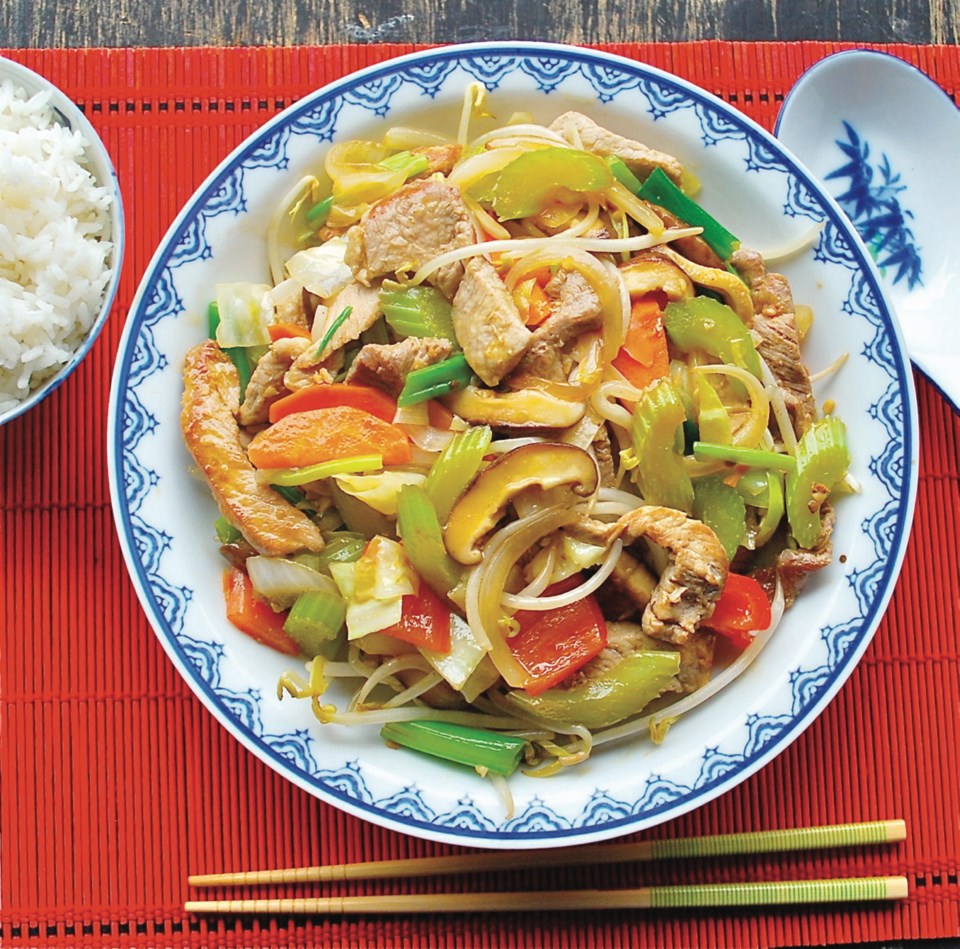My first experience with North American-style Chinese food occurred when I was a kid living in Saskatchewan.
One winter, my Moose Jaw-based peewee hockey team traveled to Swift Current to play a game. It must have ended around suppertime, because our coaches decided the team should go out for a meal before driving the two hours back home.
We went to a Chinese restaurant, whose name I cannot remember, probably because I was so captivated by everything else about the experience.
The exterior of the restaurant had a curved Chinese-style roof. Inside, the place was decorated with Chinese lanterns, dragons and other cultural symbols that mesmerized me.
But what really caught my attention was the food. When platters filled with egg rolls, sweet and sour chicken balls, fried rice and chop suey came, they seemed absolutely exotic. I was mostly raised on meat and potatoes, so they were things I had never tried before.
When I grew up and became more knowledgeable about food, I realized that what we were served that day wasn’t exactly authentic Chinese cuisine. They were Chinese-style dishes designed to please a broad range of palates. In fact, some of those dishes were actually invented in North America, not China.
One example is chop suey. Legend suggests that this style of vegetable-rich dish, which usually also contains a protein such as meat or shrimp, was first made in the 1800s by Chinese immigrants in California’s gold rush.
In Chinese restaurants that opened during that time, shap sui was served, which in Mandarin meant odds and ends or mixed pieces. It was also known as tsap seui, a Cantonese dish that translates as miscellaneous leftovers.
That’s exactly what the dish, which eventually became known as chop suey, was, as it was often made with ingredients the cook had on hand.
My recipe sees seared strips of pork tossed with stir-fried vegetables, lightly coated with a simple sauce. The chop suey cooks quickly, so have all the ingredients cut and ready to go before you fire up your wok.
Pork and Vegetable Chop Suey
Strips of quickly marinated and seared pork are tossed with a tasty mix of stir-fried, sauce-coated vegetables. Serve the chop suey with Chinese-style egg noodles or steamed rice.
Preparation time: 30 minutes, plus marinating time
Cooking time: about 10 minutes
Makes: three to four servings
325 grams pork tenderloin or boneless pork loin chops, cut into thin strips
1 large garlic clove, minced
1 Tbsp chopped fresh ginger
1 tsp sesame oil
2 Tbsp soy sauce (divided)
2 1/2 Tbsp peanut or vegetable oil (divided)
1/2 cup chicken broth
1 tsp cornstarch
1 tsp granulated sugar or honey
• hot Asian-style chili sauce, to taste (I used Sriracha)
1 small onion, halved and thinly sliced
1 small to medium carrot, halved lengthwise, thinly sliced diagonally
1 medium celery rib, halved lengthwise, thinly sliced diagonally
1/2 large red bell pepper, cubed
8 shiitake mushrooms, stems removed and discarded, caps sliced (see Eric’s options)
1 cup chopped green cabbage
1 1/2 cup bean sprouts
3 green onions, cut into 1-inch pieces
Place pork, garlic, ginger, sesame oil and 1 Tbsp soy sauce in a bowl and toss to combine. Cover and let pork marinate 30 minutes at room temperature.
When pork has marinated, place 2 Tbsp oil in a wok or large skillet set over medium-high heat. When oil is very hot, add the pork and sear and stir-fry until cooked through, about four minutes.
Remove pan from the heat, lift pork out of it with tongs and set in a clean bowl.
Place broth, cornstarch, sugar (or honey), chili sauce and remaining 1 Tbsp soy sauce in a small bowl and mix to combine.
Place remaining 1/2 Tbsp of oil in the pan you cooked the pork in and set back over medium-high heat. When oil is hot, add onion, carrot, celery, bell pepper, mushrooms and cabbage and stir-fry three to four minutes, until crisp/tender.
Return pork to the pan, add the broth/cornstarch mixture and bring to a simmer. Toss in the bean sprouts and green onion and heat through 30 seconds or so, and then serve.
Eric’s options: Fresh shiitake mushrooms are sold at most supermarkets. If you can’t find them, six sliced medium-brown mushrooms will also work in the chop suey. An equal weight of boneless, skinless chicken breast or thigh, thinly sliced, could replace the pork in this recipe.
Eric Akis is the author of eight cookbooks, including seven in his Everyone Can Cook series. His columns appear in the Life section Wednesday and Sunday.
Enjoy dinner and a book to benefit Chinatown
Ann Hui, author of Chop Suey Nation: The Legion Cafe and Other Stories from Canada’s Chinese Restaurants, will talk about her book and related topics at Victoria’s Don Mee restaurant on Saturday, Oct. 5.
Her bestselling book chronicles a trip she took across Canada, visiting dozens of Chinese restaurants, many in small towns, from Newfoundland to B.C. Along the way, she documented the interesting stories of the people who run them, including a woman who operates a restaurant alone, 365 days a year, on remote Fogo Island.
The book also weaves in Hui’s family history, such as her father’s journey from cooking in rural China to operating some of the largest “Western” kitchens in Vancouver. It also explores the fascinating history behind what she calls “chop suey” cuisine, detailing the invention of popular dishes such as ginger beef.
The event at Don Mee begins at 6 p.m. For $50 per person, you get to hear Hui speak and be served an eight-course dinner. For $65 per person, you get dinner and a copy of her book. For $110, two people will be served dinner and receive one copy of her book.
For reservations and more information, email Charlayne Thornton-Joe at charlaynetj@outlook.com. Net proceeds from the event will benefit local charities and/or improvements to Victoria’s Chinatown, Canada’s oldest.
Don Mee restaurant is at 538 Fisgard St. — Eric Akis



